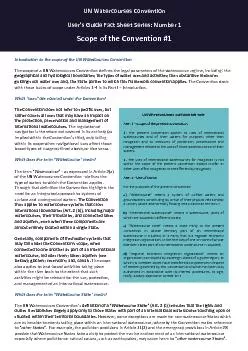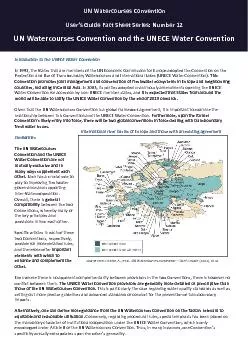PDF-atercourses
Author : olivia-moreira | Published Date : 2015-12-04
UN W C onvention Userx2019s Guide Fact Sheet Series Number 1 Scope of the Convention 1 Introduction to the scope of the UN Watercourses Convention The scope of a UN
Presentation Embed Code
Download Presentation
Download Presentation The PPT/PDF document "atercourses" is the property of its rightful owner. Permission is granted to download and print the materials on this website for personal, non-commercial use only, and to display it on your personal computer provided you do not modify the materials and that you retain all copyright notices contained in the materials. By downloading content from our website, you accept the terms of this agreement.
atercourses: Transcript
UN W C onvention Userx2019s Guide Fact Sheet Series Number 1 Scope of the Convention 1 Introduction to the scope of the UN Watercourses Convention The scope of a UN Watercourses Convention. It entitles a watercourse tate to an equitable and reasonable sha re of the uses and benefits of the particular watercourse and also creates the reciprocal obligation not to deprive other tates of their respective rights in this regard This principl UN W C onvention User’s G u ide Fact Sheet Series: Number 12 UN Watercourses Convention and the UNECE Water Convention Introduction to the UNECE Water Convention In 1992, the S tates that are m
Download Document
Here is the link to download the presentation.
"atercourses"The content belongs to its owner. You may download and print it for personal use, without modification, and keep all copyright notices. By downloading, you agree to these terms.
Related Documents


